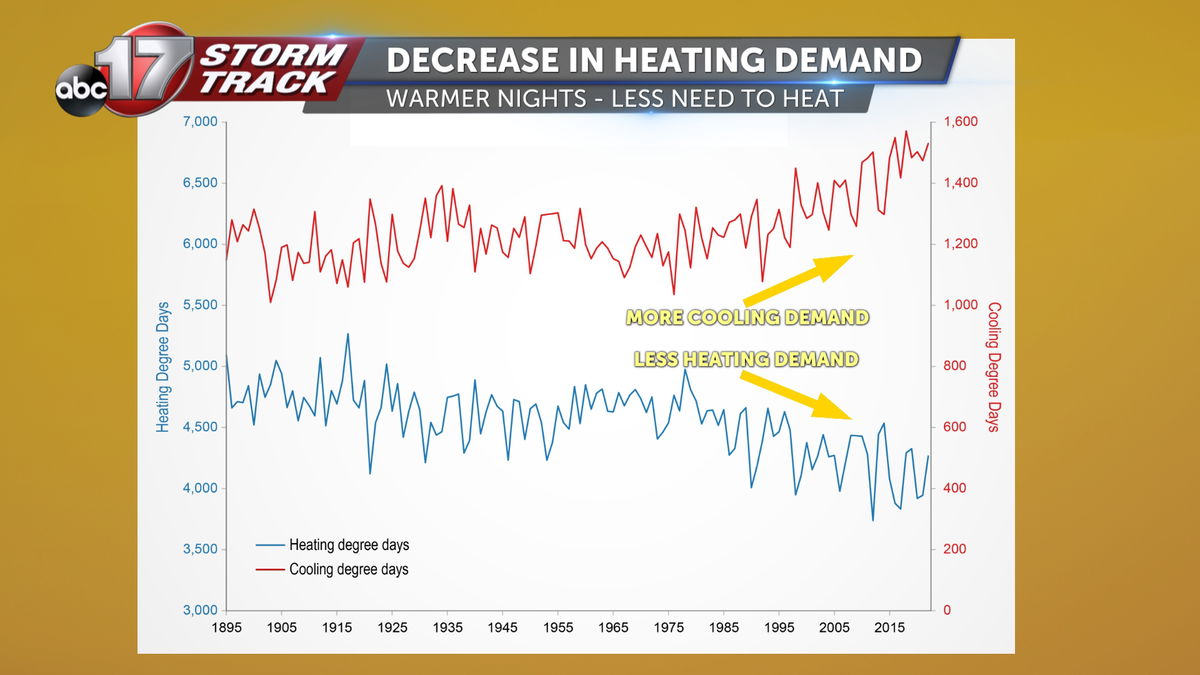Climate Matters: Warmer winters may help lower heating costs
Above average has been the trend for temperatures this year as we only recently began to feel cooler conditions in Mid-MO. That extra heat is problematic during the hot summertime, but warmer temperatures in the winter aren't bad in some regards. With the climate warming and less chilly nights on average, we may not need to heat our homes as much.
While we can track the changing climate by looking directly at temperatures, there are other metrics that encompass more impact on people. "Degree days" are used to estimate energy costs for heating and cooling during all seasons. This is based on a benchmark temperature of 65 degrees, roughly the ideal indoor temperature. Each degree higher than this is known as a "cooling degree day" which seems backwards, but this metric is based on the energy needed to get back to 65 degrees. Thus, we need to cool our homes when the temperature is above 65 degrees, leading to what's known as "cooling degree days". This is also the same for temperatures below 65, where the energy needed to warm up is known as "heating degree days."

We can also track degree days over time and recent decades have seen a trend in both directions. There has been a simultaneous increase in cooling degree days and a decrease in warming degree days. This is indicative of a warming climate where we see more of a cooling demand in the summertime and less need for warming in the winter.
Temperatures are only one factor for your energy bill, and there are other ways to weatherize your home to keep the heat in. Keeping all doors and windows closed and checking for drafts can help insulation, and each degree counts when you're warming.
